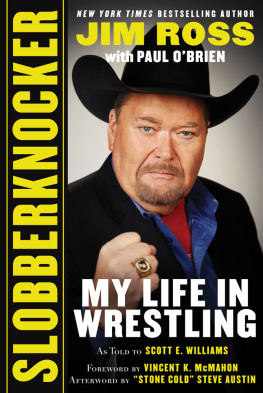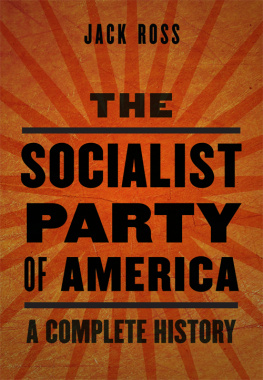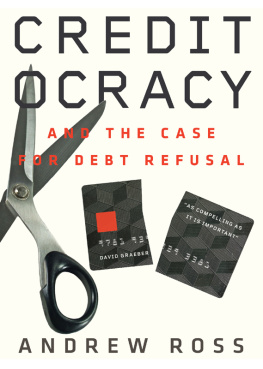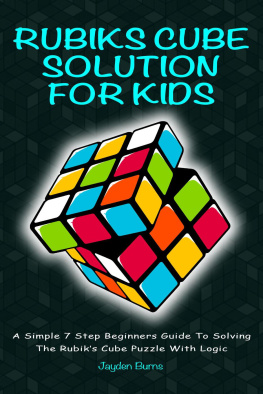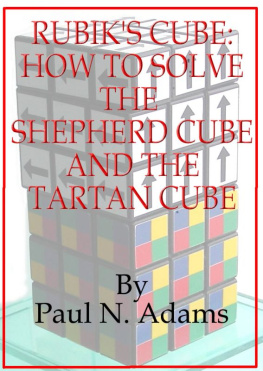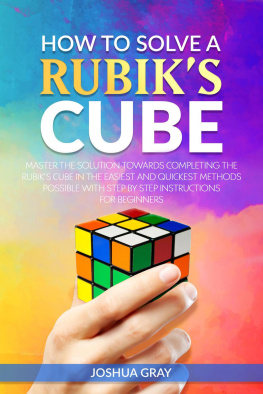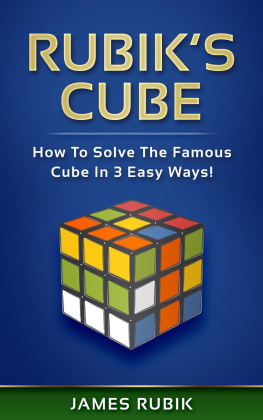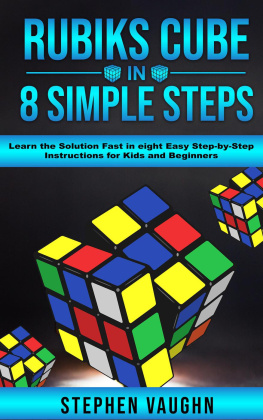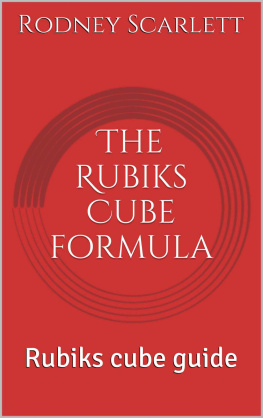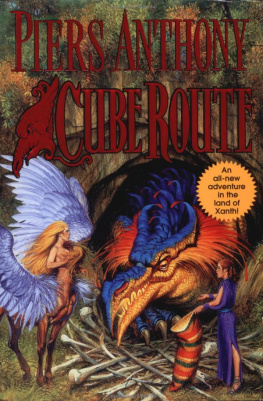`
Rubiks Cube Best Algorithms
Top 5 speedcubing methods
by
Daniel Ross
Table of Contents
Introduction
Let me just say that I am really proud of you. Getting this book is a proof that you are among the selected few who decided to step up this game and see beyond the rewards of solving the Rubiks cube.
You see, not all who tried solving the greatest puzzle toy of all time became successful. Many, in fact millions of them, gave up and convinced themselves that solving the cube is too difficult.
But you are different. I bet you really want to solve the cube; thats why you have purchased this book. Or probably you have already solved your Rubiks cube and you want to better understand its mechanism.
As you will learn in this book, the Rubiks cube is not just a random toy with random colors that you can solve by haphazardly turning and rotating. No, the Rubiks cube is a great example of what mathematical thinking can do. It follows specific sequences and patterns that you can only understand once you understand and speak its language: algorithms.
As suggested by the title of the book, you will learn the best algorithms that master speedcubers are currently using to solve the Rubiks cube in as fast as four seconds. You will also learn some tips and tricks on how you can improve your skills in solving the Rubiks cube.
Once again, thanks for downloading this book. I hope you find it helpful!
Chapter 1 - The Rubiks Cube: The Greatest Puzzle Invented
The Rubiks cube is among the quite few puzzles to have survived and became very popular worldwide, even though it has been introduced in the 1970s, before even most of its present patrons even existed.
A Brief History of the Rubiks Cube
To better appreciate the Rubiks cube and be proud of its legacy, we will take a short look at its rich history. Before Rubiks cube was introduced in the public, similar puzzle toys have been released in the market. Several years before Erno Rubik received a patent for the 3 x 3 puzzle, a 2 x 2 puzzle toy was invented and introduced to the public by Larry Nichols. In the 1970s also, Frank Fox patented a 3 x 3 x 3 puzzle toy. But neither Nichols nor Foxs toy took off the market. Rubiks cube became very popular.
Erno Rubik received the patent for his 3 x 3 Magic Cube in 1975. The device was originally created for him to study an object with parts that can independently move. Rubiks cube was first introduced in Budapest two years after. Ideal, a toy company, later helped Rubik to bring the magic cube to the world.
World Wide Success
Rubiks Magic Cube enjoyed positive success around the world. It was released globally in 1980. In the same year, the puzzle toy also won the prestigious Toy of the Year Award. The reason behind the Rubiks cube success is because children and adults find it entertaining and challenging. In fact, most customers are adults, and after only two years, more than 100 million Rubiks cube has been sold around the world. The cube was well-praised by critics because of its simplicity yet difficulty to solve.
The Inventor
Erno Rubik is a Hungarian architect and inventor of the Rubiks cube. He was born in 1944 during the height of the World War 2. He studied at the Technical University in Budapest in 1967 and started postgraduate studies in interior architecture and sculpting. During the time that he invented the Rubiks cube, he was an architecture professor at the Budapest College of Applied Arts.
As a professor at the academy, Rubik was very fond of constructing geometric figures. Thanks to this hobby, he was able to design a cube, composed of 27 blocks made of wood. It took him over a month to solve the puzzle cube, which he later used as an effective tool to teach permutations in his algebra class.
This cube became very popular in the academy and soon in Budapest, and the rest is history.
Rubik became a tenured professor in 1987, and in 1990 he was elected as the president of the Hungarian Academy of Engineering. During his tenure, he built the International Rubik Foundation who works for supporting talented engineers in Hungary.
Currently, Rubik is primarily working on developing video games and still a main global icon in architectural topics.
Little is known about Rubik as he is an introvert and avoids public appearances. He rarely signs autographs, so if you have one, you are quite fortunate. He is not even known for attending speedcubing events.
What is known is that as a result of his invention, Rubik became one of the wealthiest Hungarians today.
Infringement Issues
After the remarkable success of Rubiks cube in the world market, Larry Nichols filed an infringement case against Rubik and Ideal Co in 1982. Nichols won the case in 1984, but Ideal Co filed an appeal case submitting new evidence that Rubiks design was original because it used interlocking plastic parts while Nichols design used magnetic blocks. In 1986, the appeals court decided the case for Rubiks design. It was then formally established that the 3 x 3 Magic Cube invented by Rubik was his original design.
Difficulty in Solving the Puzzle
Rubiks cube became a very popular toy, but some customers complained that it is impossible to solve. Hence, Ideal Co later releases tutorials and guide books to teach people how to solve the puzzle. The most popular tutorial was You Can Do the Cube by Patrick Bossert, which was released in 1981.
Rubiks 4 x 4 Revenge
In 1981, a new version of the magic cube was released by Ideal Co. The Rubiks 4 x 4 Revenge was also a massive hit, as it posed an even more challenging puzzle. The 4 x 4 cube was not originally invented by Rubik, even though the creator of the cube authorized the name as a marketing strategy.
Rubiks Cube World Championships
Only after a few years after the global release of the Rubiks cube, in spite of the millions of cubes that were remain unsolved by that time, cube fanatics decided to take the puzzle to the next level - solving the Rubiks cube as fast as they can.
The first Rubiks Cube World Championship happened in 1982 where 20 contestants from around the world compete to become the fastest Rubiks cube solver. The first World Champion was Minh Thai of United States who solved a 3 x 3 Rubiks cube within 22.95 seconds.
The Fridrich Method
Although Minh Thai won the World Championship in 1982, the contestant from Czech Republic, Jessica Fridrich became a notable figure in the competition, mainly because of her method in solving the Rubiks cube.
Fridrich used an easy-to-follow layer method that is a strategy used by most cube fanatics today. She then created easy algorithms in solving the cube, and in 1997 she published her methods on the Internet. The Beginner and Advanced Method discussed in this book were based on Fridrichs algorithms.
World Cube Association
The World Cube Association (WCA) was established by Tyson Mao and Ron Van Bruchem in 2004, mainly to promote speedcubing contests. WCA also created a website where anyone can access speedcubing results and try to beat the fastest speedcubers in the world.
Because of WCAs efforts, speedcubing developed into a worldwide hobby and the competitions hosted by WCA became an avenue where world records are made.


